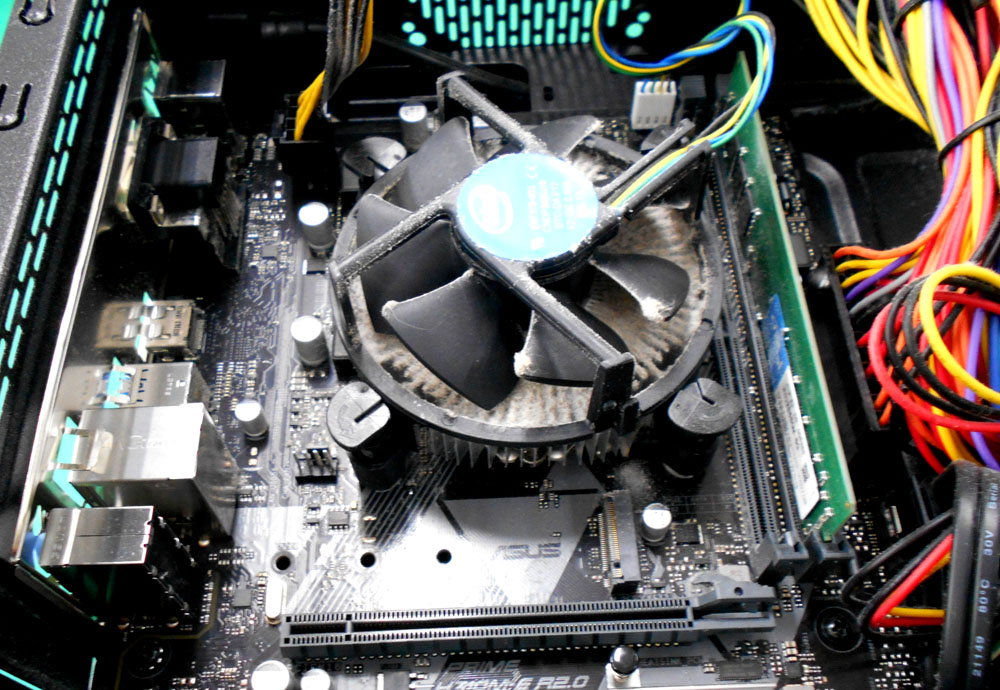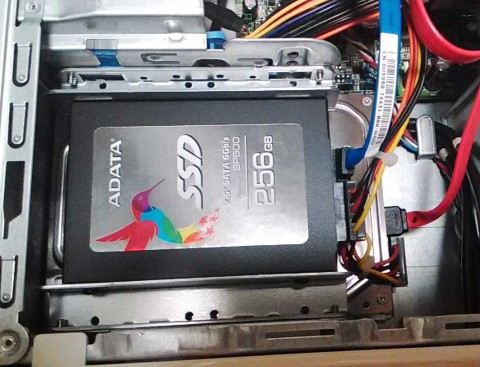Compared to hard disk drives, solid state drives (SSDs) are becoming increasingly popular among PC enthusiasts for two simple reasons: speed and reliability. If you’re still using an HDD and looking to upgrade, or if you’re building a new desktop PC, choosing an SSD will significantly improve your computer’s performance. You’ll notice a big difference in app load times, file copying, etc. So, don’t waste your time and follow the step-by-step process to install SSD in your desktop PC. Installing an SSD isn’t that difficult, but it can be nerve-wracking for first-time PC builders. That said, don’t worry as we’ll show you how to choose a compatible SSD, find the right slot, and install a storage drive on your desktop.
This article will help you distinguish between different SSD slots on your motherboard as they support different SSDs based on their pin connectors. The SSD will not work until it is connected to the correct slot on the motherboard. For more information about motherboard SATA and M.2 slots, please refer to the linked article. Now, let’s learn how to install M.2 and 2.5-inch SATA SSDs in your PC. 
Things to remember before installing an SSD
Check SSD and motherboard compatibility
All modern motherboards support NVMe SSDs up to a certain generation. Most motherboards on the market today support NVMe Gen 4 SSDs. These slots are also backward compatible with Gen 3. You can configure the M.2 slot in the BIOS. We recommend doing this before proceeding with the SSD installation guide. If you are planning to buy a low-cost SSD, we have listed the best options here.
Additionally, there are SATA SSDs in 2.5-inch or M.2 form factors. The slot for connecting M.2 SATA SSD is different from the NVMe M.2 SSD slot. Please refer to your motherboard documentation to determine which M.2 slots are available. Some motherboards also come with NVMe Gen 5 SSD support and support Intel’s 13th Gen Raptor Lake CPUs (read our Core i9-13900K review) and Ryzen 7000 series CPUs. However, these new SSDs are currently being rolled out and are very expensive.
Migrate or install an operating system
Prepare to migrate your existing operating system (OS) or have the installation disks for your new OS handy. Cloning a Windows partition to a new SSD can cause some issues, at least in our personal experience. The most recommended method is to back up all your data and perform a clean install of Windows 11 on your new SSD. However, many OS migration tools are provided in case you need to preserve the OS partition and its data.
Check the power cable you need
A power supply unit (PSU) has several connectors that connect to your PC’s motherboard. Among these connectors is the SATA power connector , which you must prepare before installing a 2.5-inch SATA SSD in your PC. Additionally, you will also need the SATA cable that comes with the motherboard box. This is also available online. These SATA power connectors and cables look like this:
Gather the necessary tools
It goes without saying that installing an SSD into your PC build requires a few key tools. In this case, you will need a Phillips screwdriver. Additionally, make sure you have the mounting screws (included on the motherboard for M.2 SSDs or the PC case for 2.5-inch SATA SSDs).
Before proceeding, you need to clean your workplace and organize the necessary tools. You should have your motherboard manual handy to see some of the things that differ from board to board. Finally, be sure to ground yourself to avoid damage from static electricity. A great way to ensure this is to wear an anti-static wrist bracelet. 
How to install an M.2 SSD into your PC
Before continuing with the SSD installation, remember to use a Phillips screwdriver to open the side panel of your PC case. You will now have access to the motherboard and its various ports. Also, don’t forget to enter the BIOS in Windows 11 and change the settings to select the appropriate NVMe generation for your SSD.
M.2 NVMe SSD Installation Guide
1. First, check which M.2 slots on your motherboard support the NVMe standard. Modern motherboards typically have a variety of M.2 slots and can accommodate SATA M.2 SSDs or NVMe M.2 SSDs with specific slots for each NVMe generation. You will need to refer to your motherboard manual to locate the NVME M.2 slot and that will be the final location to install your M.2 NVMe SSD.
2. Once you know the correct location to install your NVMe SSD, open the SSD heatsink cover located on the motherboard.
3. Next, slide the SSD into the NVMe M.2 slot on the motherboard at a 45 degree angle.
4. Once firmly seated, push in from the other end of the SSD. There is a standoff below the M.2 slot, on which the NVMe SSD rests securely. Ours stuck with the tool-less installation method. If you are unfamiliar with anything, please refer to your motherboard manual.
5. Next, place the heatsink cover back on top of the NVMe SSD. The screws should line up with the SSD and the standoffs below it. Reinstall the heatsink and screw in the SSD.
Note : If your motherboard does not have an SSD heatsink, you can directly screw in the SSD using the unique screws provided with your motherboard. Make sure the standoff is down and if it’s not in the correct position, just remove it and screw it into the correct position (determined by the length of your SSD). You should also make sure to remove the SSD heatsink plastic cover, if present.
6. Well, that’s it. The NVME M.2 SSD has been successfully installed in your computer . You can now proceed to the section to check if your SSD is properly installed and ready for use.
M.2 SATA SSD installation guide
Additionally, if you plan to install an additional M.2 SATA SSD or upgrade an existing M.2 SSD, check which M.2 slots on your motherboard support SATA SSDs.
1. Modern motherboards have dedicated M.2 slots that support SATA SSDs. These are in different positions, usually at the bottom. Please refer to your motherboard documentation to determine which M.2 slots support SATA SSDs.
2. You can now proceed to install the M.2 SATA SSD in the same way as the NVMe SSD described above. The only change required is to install it on a SATA M.2 port instead.
Note : Here is a visual explanation of the pinout differences between NVMe M.2 SSD and SATA M.2 SSD.

How to install a 2.5-inch SATA SSD in your PC
1. First, locate the SATA slot on your motherboard. Next, use the SATA cable and plug it into one side of the motherboard’s SATA female connector.
Note : Connect the SATA cable to the first available SATA port. On modern motherboards, the last few SATA ports may be disabled due to bandwidth limitations from other devices.
2. Next, find a location in your PC case where you can install the 2.5-inch SATA SSD. Then place the SSD in there and screw it in using the case screws provided to attach the drive to the storage bay. This step requires the use of a Phillips screwdriver.
3. Next, plug the SATA power connector and the other end of the SATA cable into the SATA SSD. You can follow the power cable to find the SATA power connector.
5. Voila! You learned how to install a 2.5-inch SATA SSD in your PC. But there is still some work left to do. You will need to access your BIOS to see if your new SSD is recognized. Next, you need to format your SSD so you can use it.

Make sure your new SSD is installed correctly
Next, boot your PC and press and hold Delete or F2 key to enter BIOS settings. The first boot screen of your PC will also show the correct button to enter the BIOS. Otherwise, you can find the same information by visiting your motherboard manufacturer’s website or by consulting your manual.
The Disk or Storage Information section of the BIOS settings displays various storage devices connected to the motherboard. Here, the BIOS will display the brand, type (NVMe or SATA), and capacity of the SSD. 
Get your new SSD ready to use
For users upgrading an existing PC and using the existing boot drive, first log in to Windows. After installing a new SSD, you’ll see a pop-up asking you to format the drive before it’s ready to use. If you get one, just format the drive from the popup and the drive will be ready for use.
If you don’t see the popup, format your new SSD and verify its presence in Windows 11: Press the “Win” key to open the Start menu and type ” Create and format hard disk partitions .” Then click on the search result to access the disk management utility .
Then scroll down to the drive list and you will see that the new drive is marked as ” Unallocated Space “. Right-click on the SSD list to access options that allow you to create a new volume. Run this wizard and once it’s complete, refer to this guide to format your new SSD in Windows 11.
That’s pretty much everything you need to know about installing an NVMe or SATA SSD on your desktop PC’s motherboard. Following the steps above will successfully install an SSD in your PC. Does it come from a traditional hard drive (HDD)? If so, the speed difference will be astronomical. Boot times and game load times will be faster, and you’ll never go back to your HDD. To proactively check and optimize the health of your solid state drive, we recommend using SSD management software such as Samsung Magician. Read this article to learn how Microsoft uses the NVMe SSD-specific DirectStorage API to speed up load times and provide richer assets for PC games. If you encounter any problems during installation or have any doubts, please let us know in the comments section below.
Yes, just plug your new SSD into a compatible slot. For 2.5-inch SSDs, you will also need to connect a SATA power cable. For M.2 SSDs, they run from the motherboard power.
The M.2 slot for installing M.2 SSD on the motherboard is different for both SATA SSD and NVMe SSD. You should always check your motherboard manual to determine which M.2 slot to install your SSD into.
no. Connect your NVMe SSD to a compatible M.2 slot. However, a SATA M.2 SSD connects to a separate M.2 slot on your PC’s motherboard.
Yes, you can install a 4th generation NVMe SSD in a 3rd generation slot. However, keep in mind that 4th generation NVMe SSDs operate at 3rd generation speeds. So don’t waste your money unless you upgrade to a PCI-e Gen 4 compatible motherboard soon.
Yes, a good 4th generation NVMe makes a big difference in speed compared to 3rd generation. However, actual usage depends on the user. For example, content creators have to work with large amounts of data. The latest NVMe SSDs are useful in scenarios such as:
If you connect an M.2 SATA SSD to an incompatible M.2 slot, such as one designed for NVMe, the drive will not be recognized.
If you connect an M.2 NVME SSD to an incompatible M.2 slot, such as one designed for SATA SSDs, the drive will not be recognized.




![How to set up a Raspberry Pi web server in 2021 [Guide]](https://i0.wp.com/pcmanabu.com/wp-content/uploads/2019/10/web-server-02-309x198.png?w=1200&resize=1200,0&ssl=1)












































